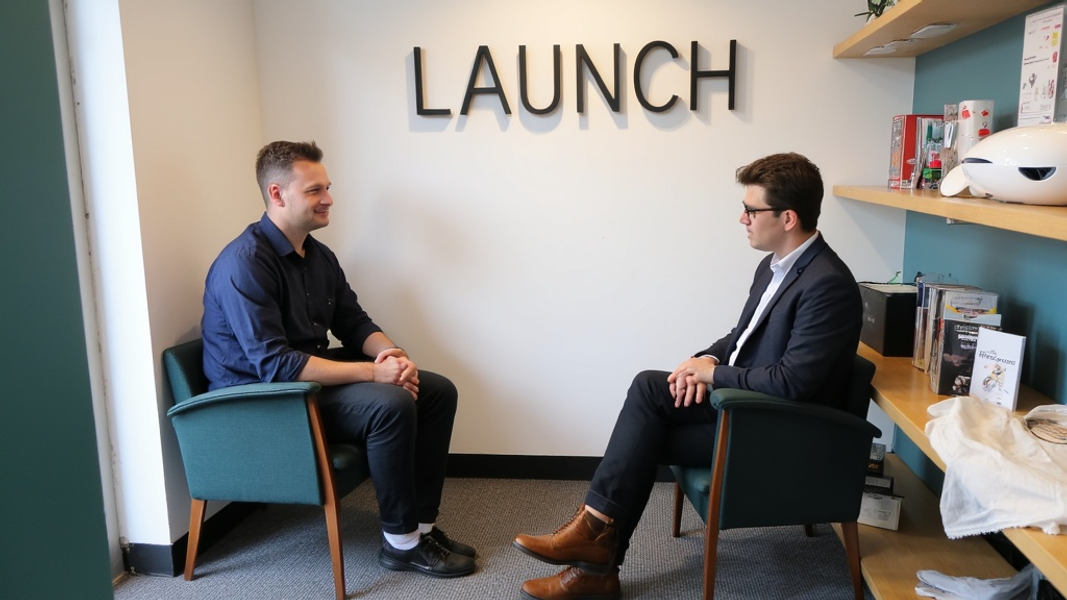
Ever wonder how some startups seem to appear out of nowhere and take the world by storm? The secret lies in a well-planned launch. This post will give you practical ideas to make your startup's debut unforgettable and set you up for success from day one.
Pre-Launch Preparation
Before you unveil your startup to the world, you need to lay a strong foundation. This groundwork will help you make the most of your launch and connect with the right people from the start.
Know Your Audience Inside Out
Start by creating a clear picture of who your ideal customers are. Think about their age, job, hobbies, and the problems they face that your product can solve. Talk to people who fit this description. Ask them about their needs and what they look for in a product like yours. This research will help you shape your message and product to fit what your audience truly wants.
For example, if you're launching a fitness app, you might find that your target users are busy professionals in their 30s who struggle to find time for the gym. Knowing this, you can focus on how your app helps people work out at home in short bursts.
Craft a Message That Sticks
Once you know your audience, create a clear statement about what makes your startup special. This is your unique value proposition (UVP). It should explain in simple terms why someone should choose your product over others.
Test your UVP with potential customers. Ask them if it makes sense and if it would make them want to try your product. Keep tweaking your message until it really clicks with people. A strong UVP might be: "Get fit in 15 minutes a day, no equipment needed."
Build Excitement Before Launch
Create a simple website that hints at what's coming. Use a tool like Carrd to make a sleek landing page fast. Include a way for people to sign up for updates. This list of early fans will be gold when you launch.
Share sneak peeks on social media. Post behind-the-scenes photos or short video clips of your team working. This gives people a personal connection to your brand before you even launch.
Digital Launch Strategies
In today's connected world, a strong online presence is key to a successful launch. Here are some ways to make a big splash in the digital space.
Make Waves on Social Media
Choose social platforms where your target audience spends time. If you're targeting professionals, LinkedIn might be your focus. For a younger crowd, TikTok could be the way to go.
Plan your content ahead of time. Create a mix of posts that inform, entertain, and engage. You might share tips related to your industry, fun facts about your team, or ask followers questions to start conversations.
Use hashtags wisely to help people find your content. Create a unique hashtag for your launch that people can follow and use.
Team Up with Influencers
Find influencers who have a following that matches your target audience. Look for people with engaged followers, not just big numbers. Micro-influencers, those with smaller but highly engaged audiences, can be particularly effective.
Reach out to these influencers with a clear pitch. Explain how your product aligns with their audience's interests. Offer them early access to try your product and share their honest thoughts.
Consider creative collaboration ideas. An influencer could host a live unboxing of your product or take over your social media for a day to share how they use your product in their daily life.
Host a Virtual Launch Party
Plan an online event that brings your brand to life. Use a platform like Zoom or Hopin to create an interactive experience. Include a mix of live presentations, product demos, and Q&A sessions.
Make it fun and engaging. You could have a virtual photo booth where attendees can take pictures with branded filters. Or run a live poll to get instant feedback on different features of your product.
Invite industry experts to speak at your event. This adds credibility and draws more people to attend. Make sure to record the event so you can share highlights later and reach even more people.
Content-Driven Launch Ideas
Content is a powerful way to showcase your expertise and build trust with potential customers. Here are some content strategies to boost your launch.
Create a Launch Video Series
People love seeing the human side of a brand. Create a series of short videos that tell your startup's story. Show how your idea came to life, introduce your team, and give glimpses of your product development process.
Keep each video under 3 minutes to hold attention. Share these on your social media and website. You could release one video per week leading up to your launch to build anticipation.
Start a Blog and Guest Posting Campaign
Launch a blog on your website with helpful content related to your industry. If you're launching a healthy meal delivery service, you might write about nutrition tips, easy recipes, or the benefits of eating local produce.
Reach out to popular blogs in your niche and offer to write guest posts. This gets your name in front of new audiences and can drive traffic back to your site. Make sure your guest posts provide real value and aren't just ads for your product.
Go on a Podcast Tour
Podcasts are a great way to reach engaged listeners. Make a list of podcasts that cover topics related to your startup. Craft a pitch explaining why you'd be a great guest and what value you can offer their listeners.
Prepare talking points before each interview. Share stories about why you started your company and the problems you're solving. Be ready with clear, concise answers to common questions about your product or industry.
Offline Launch Tactics
While digital strategies are important, don't overlook the power of in-person connections. Here are some offline ideas to make your launch memorable.
Create Pop-Up Experiences
Set up temporary spaces where people can interact with your brand in person. If you're launching a new tech gadget, create a hands-on demo area in a busy shopping district. For a food or beverage product, offer free samples in high-traffic areas.
Make these pop-ups Instagram-worthy. Use eye-catching designs and interactive elements that encourage people to take and share photos. This turns your offline event into online buzz.

Throw a Launch Party
Host an event that brings together media, influencers, potential customers, and industry partners. Choose a venue that fits your brand image. If you're an eco-friendly startup, consider an outdoor space or a venue known for sustainable practices.
Plan activities that showcase your product. If you're launching a fitness app, you could have short workout sessions led by trainers. For a food delivery service, offer tastings of dishes available through your app.
Provide plenty of opportunities for networking. Set up areas where people can mingle and chat. Consider having a photo wall where guests can take pictures to share on social media.
Try Guerrilla Marketing
Create unexpected experiences that grab attention and get people talking. If you're launching a new running shoe, you could set up a surprise pop-up track in a busy city square and invite people to test the shoes.
Make sure your guerrilla marketing aligns with your brand values. If you're an eco-friendly company, avoid anything that could be seen as wasteful or harmful to the environment.
Be prepared to move quickly with guerrilla tactics. They often rely on the element of surprise, so you need to be ready to set up and take down fast.
Keeping the Momentum After Launch
Your work isn't done once you've launched. Here's how to keep the excitement going and turn that initial buzz into long-term success.
Listen and Adapt
Set up ways to gather feedback from your first customers. Use surveys, social media polls, or in-app feedback forms. Pay close attention to what people say about your product online.
Act quickly on this feedback. If people love a certain feature, consider expanding it. If there's a common complaint, address it fast. Show your customers that you're listening and constantly improving.
Start a Referral Program
Happy customers can be your best marketers. Create a program that rewards people for referring their friends. Offer something valuable, like a free month of service or a special product bundle.
Make it easy for people to share. Create pre-written social media posts or emails that customers can use to tell their friends about your product. Include a unique referral code or link so you can track where new customers are coming from.
Keep the Press Interested
Your launch is just the beginning of your story. Keep reaching out to media with updates on your progress. Share milestones like number of customers reached or new features added.
Develop relationships with journalists who cover your industry. Offer them exclusive insights or data that could help with future stories. This keeps your company in the news and builds your reputation as an industry leader.

FAQs
How much should I budget for a startup launch?
Launch budgets vary widely based on your industry and goals. Start by listing all the activities you want to do and researching costs. Prioritize the most important elements. Many effective launch tactics, like social media and content creation, can be done on a small budget. Aim to allocate at least 20% of your initial funding to launch activities.
When should I start planning my launch?
Begin planning your launch as soon as you have a clear idea of your product and target market. Ideally, start at least 3-6 months before your planned launch date. This gives you time to build anticipation, create content, and set up partnerships. Remember, many aspects of your launch, like building an email list or creating quality content, take time to develop.
How do I measure the success of my launch?
Set clear goals before your launch. These might include number of sign-ups, website visits, social media followers, or press mentions. Use tools like Google Analytics to track website traffic and conversions. Monitor social media engagement and growth. Most importantly, track how many people are actually using your product and how satisfied they are. Customer feedback and early retention rates are key indicators of long-term success.
By using these ideas and tailoring them to your unique startup, you can create a launch that not only grabs attention but also sets the foundation for lasting success. Remember, the goal is not just to make noise, but to connect with the right people who will become loyal customers and advocates for your brand. With careful planning and creative execution, your startup launch can be the beginning of an exciting journey of growth and impact.
